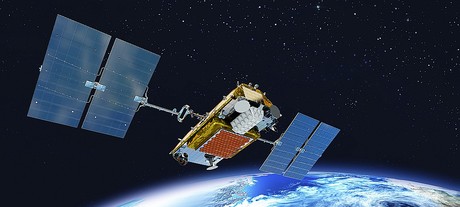SDR developed for NASA will help track aircraft

No aircraft will ever have to be off the grid, thanks in part to a software-defined radio developed for NASA.
NASA’s powerful radiocommunications network can receive pictures of cryovolcanoes on Pluto or tweets from astronauts aboard the International Space Station. But to send larger quantities of data back and forth faster, NASA engineers wanted higher-frequency radios that can be reprogrammed from a distance using software updates.
“A reconfigurable radio lets engineers change how the radio works throughout the life of [any space mission],” said Thomas Kacpura, advanced communications program manager at NASA’s Glenn Research Center. “It can also be upgraded to work better with future missions or to enhance performance, just by adding new software.”
In the past, Kacpura said, engineers were reluctant to build reconfigurable devices for space, because it’s harder to guarantee performance — after all, how do you test for functions you don’t even know you’ll be using?
However, NASA has recently been allotting more resources to reconfigurable devices, and the agency worked with Harris Corporation to design and develop a new software-defined, higher-bandwidth radio.
The radio has been put through its paces through exhaustive testing both on the ground and in space and, in 2013, it was honoured with an R&D 100 Award as one of the year’s 100 most significant innovations.
The biggest selling point of the device, which Harris markets as the AppSTAR, turned out to be its flexibility. With hardware and software both fully reconfigurable, the company could quickly and cheaply redesign the radio to fit any customer’s needs.
One of the biggest contracts so far is with Aireon LLC, a joint venture that will use the radios to create the first space-based global air traffic control system.

Reliance on land-based radar stations is set to change when a constellation of 66 satellites, owned by Iridium Communications, goes into orbit equipped with AppSTAR radios. The radios are programmed to receive signals from aircraft ADS-B transceivers, which automatically send out a flight’s number, location, heading and other details.
“Within seconds you can keep track of all the aircraft in the world,” said Harris systems engineer Jeff Anderson. Aireon has already signed contracts with a number of air traffic control agencies to integrate the space-based system into their flight tracking when the system goes live in 2018. Nav Canada, a founding partner in Aireon, was one of the first.
With real-time global tracking, aircraft can fly with less space between them and take more direct routes. “It tremendously improves public safety and potentially saves a lot of fuel costs, because you no longer have to remain in the particular airline traffic lanes,” Anderson said.
And if something does go wrong, search and rescue teams will have detailed information on where the aircraft was last spotted through a free service called Aireon ALERT.

Using an extra card slot on the radio, Harris was also able to add global tracking for ships, which the company markets as exactAIS RealTime, powered by Harris with its partner exactEarth.
AppSTAR features include:
- a Space Telecommunications Radio System (STRS)-compatible software operating environment that promotes waveform and application portability and re-use;
- third-party programmability that provides flexibility for customers to develop and maintain platform mission applications with a mission developer’s kit;
- third-party development resources that include a mission developer’s kit, a remote developer system and a multimission test bed;
- a remote developer system that provides third-party developers with secure network access to the fully instrumented AppSTAR multimission test bed;
- standard processing engines, such as FPGAs, DSPs and power PC CPUs, which enable use of standard development tools and libraries;
- compact PCI and VPX standards-based hardware that support re-use; and
- a configurable portfolio of space-proven digital, RF and power supply reference designs that optimise responsiveness.
Because AppSTAR software can be reconfigured remotely, both the Aireon and exactAIS systems can be updated well after launch. And it all started with the same box, processor and power supply cards as the NASA radio.
Comms Connect New Zealand returning to Christchurch
Comms Connect is gearing up for its first show of the year, with the New Zealand edition of the...
The new wildfire reality: mapping a response
Firefighter-turned-researcher Chris Dunn is helping pioneer data-driven solutions to tackle...
ARCIA update: LMR is not dead yet
Be it mining, rail, public safety, transport or utilities, everyone is embracing new technology...






